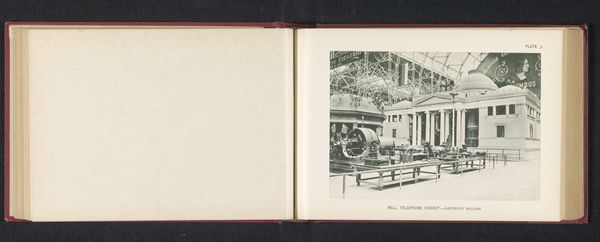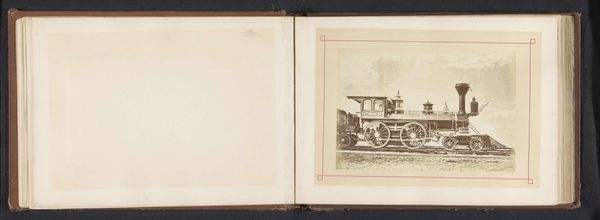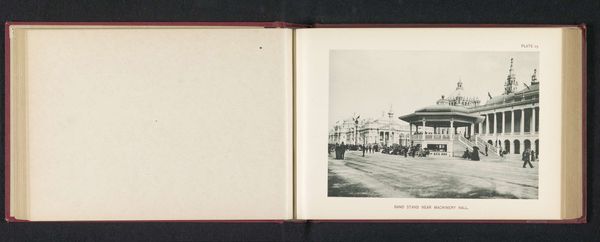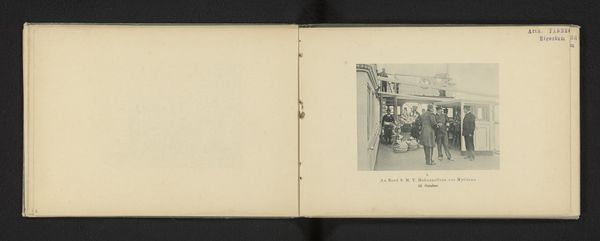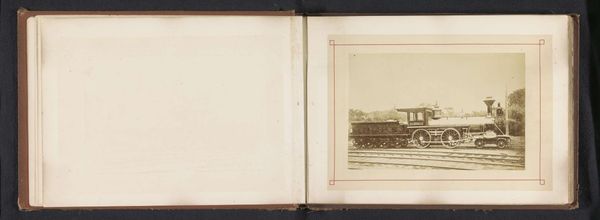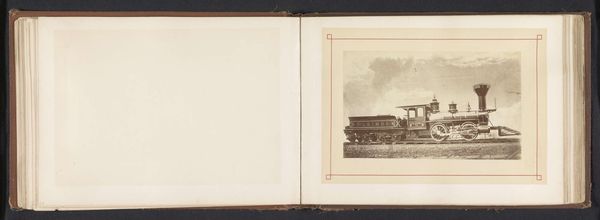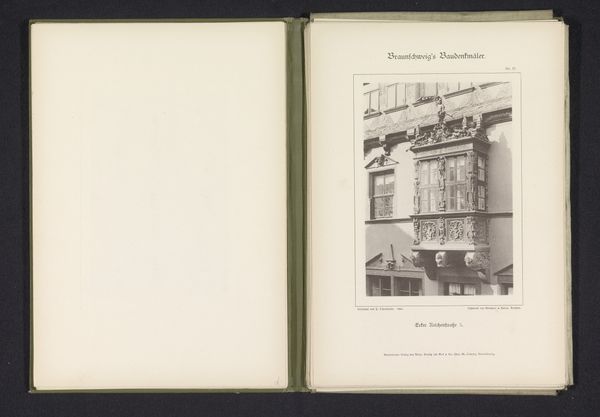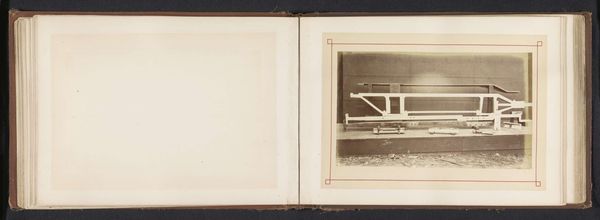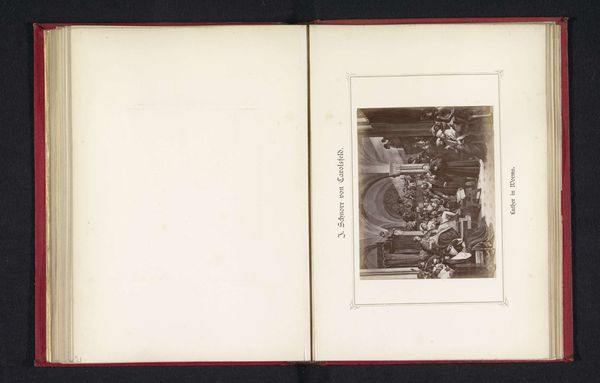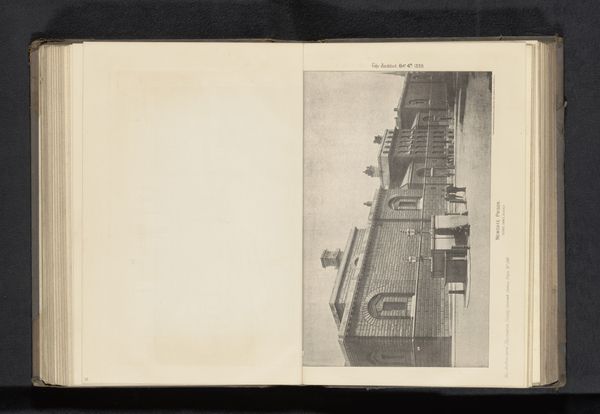
Eerste trein die reed op de Mohawk & Hudson Railroad, tentoongesteld op de World's Columbian Exposition in Chicago in 1893 1893
0:00
0:00
print, photography, gelatin-silver-print, albumen-print
# print
#
photography
#
gelatin-silver-print
#
cityscape
#
albumen-print
#
realism
Dimensions: height 131 mm, width 191 mm
Copyright: Rijks Museum: Open Domain
Curator: This gelatin-silver print, taken by Charles Dudley Arnold in 1893, captures the “Eerste trein die reed op de Mohawk & Hudson Railroad, tentoongesteld op de World's Columbian Exposition in Chicago.” Editor: My immediate impression is of a kind of ordered chaos. The repetition of forms – the wheels, the carriages, the vertical lines – it’s both visually satisfying and slightly unsettling. Like an organized accumulation of parts rather than an optimized whole. Curator: It's interesting you say that, considering the historical context. This image presents technology at the World's Columbian Exposition, a celebration of progress and industrialization. This photograph would have served as visual evidence of that progress for audiences. Editor: Perhaps, but looking closely at the composition, I see the receding planes of the carriages almost flattening. The muted tonal range also seems to create this compressed space. Is that intentional or just an artifact of the albumen printing process, which often enhanced the blacks? Curator: More than likely an effect of both! Albumen prints generally provide warmer tones. Arnold, capturing the scene for display at the Columbian Exposition, understood the importance of highlighting form and the precision. Think about the gaze of potential investors, considering if the train would become useful in their daily life. Editor: It almost feels like he's documenting a potential, and potentially disruptive technology, with the objective coldness you might associate with say, Bernd and Hilla Becher photographing water towers in the 20th century. Curator: A worthwhile analogy, in the sense that they all record utilitarian technology in detail for study. And indeed, images such as these circulated, normalizing such changes within societies through world fairs and expositions. In that sense, images become powerful propagandistic tools. Editor: Looking again, this is about more than the object of technology itself; Arnold is photographing an idea. The train here seems a static demonstration and almost feels at odds with how fast transportation can really be. The power of trains could also affect social relations; new mobility for goods and populations—something so easily overlooked when looking at photographs. Curator: Indeed, our discussion underlines the fascinating paradox embedded within this image; the object and its real life uses are often disparate. Editor: Yes, it's more than just documenting a train. It encapsulates the dawn of a transformative technological era, one both promising and, perhaps, subtly disorienting in its implications for human existence and form.
Comments
No comments
Be the first to comment and join the conversation on the ultimate creative platform.
